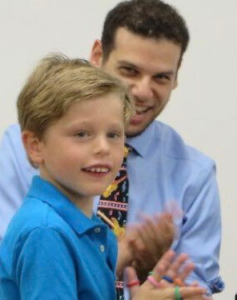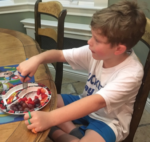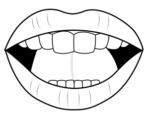The Adaptable Pianist: Orange Fundamentals
 As I enter my 10th year in the world of Autism and special education and my 20th as a music educator, motivated teachers, therapists, and parents contact me with the goal of helping people in their own special needs community through music. Many who want to teach Special Needs Piano Lessons have extensive experience in music education but little to none in special education. However, I believe special education experience is crucially important to success in applied music lessons—and in certain cases, more important.
As I enter my 10th year in the world of Autism and special education and my 20th as a music educator, motivated teachers, therapists, and parents contact me with the goal of helping people in their own special needs community through music. Many who want to teach Special Needs Piano Lessons have extensive experience in music education but little to none in special education. However, I believe special education experience is crucially important to success in applied music lessons—and in certain cases, more important.
You may be a dedicated, caring, traditional piano teacher who has a handful of special learners as students and I know you experience some really successful moments but want to give more to them. Maybe they have a decent grip on reading, but you know something just isn’t working right in terms of making the group of instructions on the page actually sound like music. Maybe Mary Had a Little Lamb and Twinkle, Twinkle were successful but suddenly you’re struggling to expand the student’s learning experience, and you can’t pinpoint exactly why.
Let’s move away from the world of piano completely to see how to think this through. If I were to tell you about Jason’s advancements and accomplishments at his Occupational Octaves Piano lessons despite his challenges (he is 8 years old and diagnosed with Autism), this would be a very long blog. He loves putting on the colored #RingsOnTheFingers and saying the colors out loud. He even wears them when we’re not playing!
on the colored #RingsOnTheFingers and saying the colors out loud. He even wears them when we’re not playing!
One day, I noticed Jason was saying “Pink, Green, Blue, Or-Gange, and Purple!” This was not surprising due to his speech impediment. I observed when he would say the G of “Or-Gange,” his lips were puckered to make the sound. Go ahead, try saying Or-Gange yourself. Did you feel that? Jason’s (and your) lips were already puckered from the “Or” portion (go ahead, try it again)…

When transitioning from the first syllable of “Orange” to the second, his lips weren’t changing their form. So, I thought about how I properly say “Or-Ange” and realized my mouth needs to change to a grin like position before saying “Ange.”
It turned out that his mispronunciation had much less to do with his speech impediment than it had to do with simple organization. In speech development, correcting the position of the lips can empower the ability to say words properly.
So how does this relate to music and piano? Imagine that instead of Jason not having his lips properly positioned that his eyes were the culprits. What if he wasn’t looking at the right spot on a piece of sheet music? I’ve had moments with countless special needs students where I’m pointing at the notes and pointing at the keys only to realize that none of it matters if I don’t assure that he/she is looking at the right spot! What can be more basic than that?! Just like I had to check the position of Jason’s lips to say orange, I have to check the position of his eyes, arms, legs, back, feet, etc. so he (and I) can have an optimal experience at the piano!
The educational limitations that may challenge learning processes are prevalent amongst special learners—so much that mild and moderate accomplishments are truly monumental. But, I believe students can go further with proper fundamentals. To dig further into the importance of accurate eye movement at the piano, check out the Tobii eye tracking system’s research on piano players here. When you watch this, keep in mind that the ocular movement of the professional is no different than the movement we’re looking to foster as special needs piano teachers.
With such a necessary focus on properly empowering a student’s independent processing and using the musical instructions on a page, simple items are easy to overlook—especially when using the complex and often confusing presentation of traditional music notation. When you, a high level player yourself, are playing a song, is your body moving around? Are you putting your non-active hand on your lap? Are your feet dancing? Nope! You haven’t even had to think about that for yourself since childhood. Now, imagine the consequences of such extraneous movement.
How much harder would playing be if you had to reposition each time you brought your hand off your lap? How much harder would it be to keep your hands in place as if your feet were in constant movement? How basic and fundamental are these questions? I can tell you from a great deal of experience – if you’re trying to teach a specific instruction or goal and the student’s energy is being used on unnecessary movement, getting control of the movement is the primary goal and educating will be the secondary goal. Why? Fundamentals, fundamentals, fundamentals! There is no sustainable empowerment without it.
On that note (no pun intended), here’s a little clip of Jason’s ever growing piano skills. The focus on fundamental piano principles is evident!

